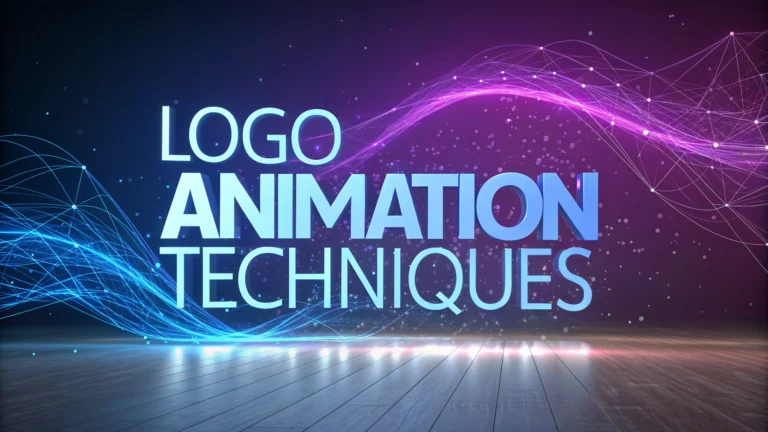Logo animations transform static brand identifiers into dynamic, memorable visual experiences that capture viewer attention and enhance brand recognition.
Common Logo Animation Techniques
- Morphing: Smooth transitions between different logo states or shapes
- Build-up: Logo elements appearing sequentially
- Rotation: 2D or 3D spinning movements
- Scale: Size changes and zooming effects
- Color transitions: Smooth color changes or gradients
Software Tools for Logo Animation
| Software | Best For | Skill Level |
|---|---|---|
| After Effects | Professional animations | Advanced |
| Adobe Animate | Vector animations | Intermediate |
| Canva | Simple animations | Beginner |
Quick Tips for Effective Logo Animation
- Keep animations under 5 seconds for optimal viewer engagement
- Maintain brand consistency throughout the animation
- Ensure the final frame shows your complete logo clearly
- Test animations at different sizes for various platforms
- Consider loading times when using animated logos on websites
Technical Specifications
Export your logo animations in these recommended formats:
- Websites: GIF, SVG, or HTML5
- Video: MP4 with H.264 compression
- Social Media: GIF under 8MB
- Presentations: MOV or MP4
Common Mistakes to Avoid
- Overcomplicating the animation sequence
- Using too many effects simultaneously
- Creating animations that are too long
- Neglecting mobile viewing experiences
For professional logo animation services, contact established motion graphics studios or freelancers through platforms like Upwork or Behance.
Animation Workflows
- Planning: Storyboard your animation sequence
- Asset Preparation: Convert logo elements to vectors
- Timing: Set keyframes and adjust motion curves
- Testing: Preview on multiple devices and platforms
- Optimization: Compress files for web delivery
Advanced Animation Effects
Particle Systems
- Logo assembly from particles
- Smoke and dust effects
- Sparkle and glitter animations
Liquid Motion
- Fluid transformations
- Splash effects
- Ripple animations
Platform-Specific Considerations
| Platform | Requirements | Best Practices |
|---|---|---|
| Square format, under 8MB | Bold, eye-catching movements | |
| Professional style | Subtle, refined animations | |
| YouTube | HD quality | Longer intro versions available |
Conclusion
Successful logo animation requires a balance of creative design, technical expertise, and strategic implementation. Focus on maintaining brand identity while creating engaging motion that enhances viewer experience across all platforms. Regular updates and adaptations ensure your animated logo remains effective and contemporary in the evolving digital landscape.
- Keep animations simple and purposeful
- Ensure technical specifications match platform requirements
- Regularly update animations to reflect current trends
- Monitor performance and adjust based on audience engagement
FAQs
- What are the most common types of logo animation techniques?
Morphing, scaling, rotation, fade-in/out, shape transformation, build-up animation, kinetic typography, particle effects, line drawing, and sequential reveal are the most common animation techniques used in logo design. - Which software is best for creating logo animations?
Adobe After Effects is the industry standard, followed by Cinema 4D for 3D animations, Adobe Animate for 2D animations, and Blender as a free alternative. Motion Design software like Cavalry and LottieFiles are also popular choices. - How long should a logo animation typically be?
A logo animation should typically last between 2-5 seconds. Anything longer risks losing viewer attention, while shorter animations may not effectively convey the brand message. - What is the difference between 2D and 3D logo animation?
2D logo animations work with flat, two-dimensional elements on the X and Y axes, while 3D animations incorporate depth (Z-axis) and can be rotated in three-dimensional space, offering more complex visual possibilities. - How important is easing in logo animations?
Easing is crucial in logo animation as it creates natural movement and professional polish. Proper ease-in and ease-out timing makes animations feel smooth and organic rather than mechanical and abrupt. - What file formats are best for logo animations?
MOV and MP4 are standard for video formats, GIF for web use, JSON for Lottie animations, and HTML5 for web-based animated logos. Vector-based formats ensure scalability without quality loss. - How can I ensure my animated logo looks good on different platforms?
Create responsive animations that work at various sizes, use vector-based elements when possible, test on multiple devices, and export in appropriate formats for each platform (social media, web, broadcast). - What’s the importance of frame rate in logo animation?
Frame rate affects smoothness and file size. 24-30 fps (frames per second) is standard for most logo animations, while 60 fps provides smoother motion but results in larger file sizes. - Should every logo be animated?
Not every logo needs animation. Consider the brand’s purpose, target audience, and usage context. Animation should enhance brand communication and not detract from the logo’s core message. - How can I make my logo animation load faster on websites?
Optimize file sizes, use appropriate compression, consider using Lottie animations for web, implement lazy loading, and avoid complex animations that require heavy processing power.







